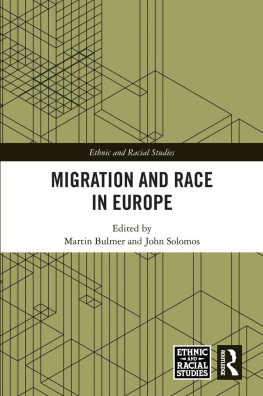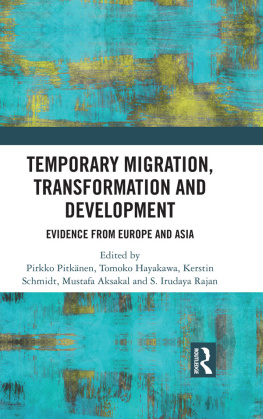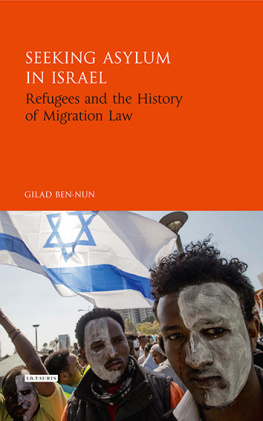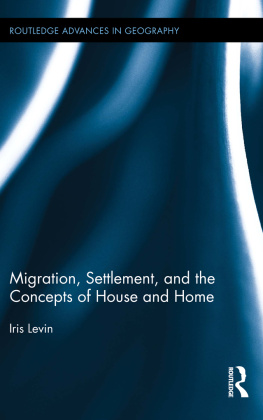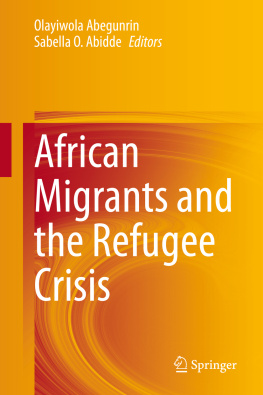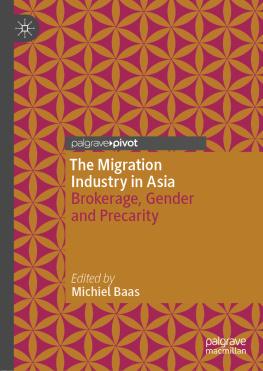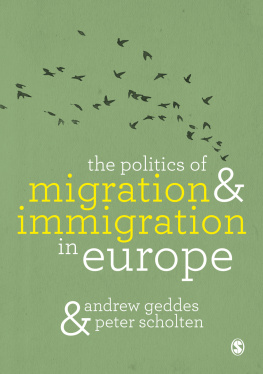This book is a publication of
Indiana University Press
Office of Scholarly Publishing
Herman B Wells Library 350
1320 East 10th Street
Bloomington, Indiana 47405 USA
iupress.indiana.edu
2019 by Jannis Panagiotidis
All rights reserved
No part of this book may be reproduced or utilized in any form or by any means, electronic or mechanical, including photocopying and recording, or by any information storage and retrieval system, without permission in writing from the publisher. The paper used in this publication meets the minimum requirements of the American National Standard for Information SciencesPermanence of Paper for Printed Library Materials, ANSI Z39.481992.
Manufactured in the United States of America
Cataloging information is available from the Library of Congress.
ISBN 978-0-253-04361-0 (hardback)
ISBN 978-0-253-04362-7 (paperback)
ISBN 978-0-253-04364-1 (ebook)
1 2 3 4 5 23 22 21 20 19
THIS BOOK IS THE OUTCOME of a project that has been with me for more than a decade. The topic of co-ethnic migration first tickled my interest while I was studying Eastern European history at Tbingen University. For my MA thesis, which I completed in 2007 under the supervision of Dietrich Beyrau and Jan Plamper, I studied the historical-legal foundation of Pontian Greek migration from the former Soviet Union to Greece. While writing the thesis, I simultaneously applied for a PhD scholarship at the European University Institute (EUI) in Florence, boldly claiming in my research proposal to turn this single case study into a three-way comparison of Greece, Germany, and Israel. As the reader of this book will realize, Greece somehow got lost on the way to the final product. There were practical reasons for thisnot the least of which was the unavailability of archival sources. But there were also conceptual considerations: only in the German-Israeli constellation was it possible to write the kind of comparative, transnational, and entangled history that has become this book.
There is no better place to learn about the merits and challenges of these approaches to history than the EUI, which accepted me as a PhD student in 2007. My project has benefited greatly from the unique international environment of this school and the input I received from distinguished academics with an impressive variety of intellectual and national backgrounds. First and foremost, my thanks go to my thesis supervisor, Philipp Ther, who shaped this work from day one, giving me much-appreciated freedom to pursue my research as I saw fit while providing me with equally appreciated input and guidance when needed. Sebastian Conrad was my second reader for the first three years; Dirk Moses capably replaced him for the final draft. All of them have been helpful ever since. Christian Joppke and Leo Lucassen were external members of my thesis committee and provided valuable advice from which I greatly benefited while turning the thesis into a book. Additional thanks go to Tony Molho, Kiran Patel, Antonella Romano, and Steve Smith, who hosted me in the stimulating intellectual environment of their thesis writing seminars.
The Israeli part of this project could not have been completed without my ten-month research stay at the Bucerius Institute for Research of Contemporary German History and Society at the University of Haifa in the 2010/2011 academic year. In Israel, too, I owe gratitude to many people. Sandy Kedar agreed to supervise me and thus gave me the opportunity to come to the Bucerius Institute in the first place. I also benefited from the input and ideas of Angel Chorapchiev, Yolande Cohen, Sagit Mor, Amos Morris-Reich, Iris Nachum, Dalia Ofer, Ilan Saban, and Yfaat Weiss. Special mention needs to be made of my Hebrew teachers Chava Sommer and Mina Ben Meir of the Haifa University Ulpan, as well as Carmit Horev at the Jewish community in Florence, whose amazing teaching abilities enabled me to learn sufficient Hebrew to study primary sources and secondary literature. This list would be incomplete without thanking Lea Dror-Batalion for keeping the Bucerius Institute up and running.
The Institute for Migration Research and Intercultural Studies (IMIS) at Osnabrck University, where I took the position in 2014 of Junior Professor of Migration and Integration of Germans from Russia, has been the perfect place to further develop this book as a work of not only comparative and transnational history but also of migration history and interdisciplinary migration studies. Among many able and inspiring colleagues that I have been privileged to work with for the past years, I would like to single out Marcel Berlinghoff, Sebastian Musch, Jochen Oltmer, Andreas Pott, Christoph Rass, and Frank Wolff. This book has become much better thanks to their input.
My work would have been much harder without capable archivists directing me to the right kind of material. While they deserve a collective thank you, I would like to single out Albrecht Ernst and Hermann Schffner at the Hauptstaatsarchiv Stuttgart, who allowed me to use classified materials up to the year 1990. Among the archivists who assisted me in Israel I would like to make particular mention of Galia Weissman at the Israel State Archives in Jerusalem. Diane Afoumado of the ITS Research Branch at the United States Holocaust Memorial Museum in Washington, DC, first introduced me to the treasure trove that is the International Tracing Service (ITS) Digital Archive, which made many of the cases discussed in come to life. Henning Borggrfe of the ITS in Bad Arolsen was helpful with some last-minute data research.
My work would have been impossible without generous institutional funding. The German Academic Exchange Service (DAAD) provided me with a long-term PhD fellowship at the EUI as well as a return fellowship after completion. The EUI provided a write-up grant for the final year as well as financial support for research missions. The ZEIT Stiftung Ebelin und Gerd Bucerius funded my ten-month research stay in Haifa. In Osnabrck, I benefit from funding provided by the Bundesbeauftragte fr Kultur und Medien (BKM) and the University of Osnabrck. I am grateful to all of them.
Over the years, I have talked about my work to many people in many different conferences and workshops, making it hard to pinpoint the contribution each one has made to the final outcome. I would like to highlight the history Kroueks at the University of California, Berkeley, in 2008 and 2011, which I attended upon invitation from Mark Keck-Szajbel; the 2011 workshop at Cambridge University on Migration, Mobility and Movement in Modern German History, organized by Richard J. Evans, Victoria Harris, Barbara Koenczoel, and David Motadel; the 2011 German Studies Association (GSA) panel on Yugoslavs in Germany at the GSA annual conference, where Rita Chin commented on what was to become the German part of ; the 2014 workshop on Medical Selection Examinations during the Recruitment of Work-Related Migrants in Europe between 1950 and 1990, organized by Sascha Topp and Volker Roelcke at the University of Giessen, which taught me a lot about medical borders; and the 2016 German-Israeli Frontiers of Humanities (GISFOH) Symposium Witnessing and Knowing: Challenging Re/Sources of Knowledge in Potsdam, where I could put my ideas to the test in front of a critical Israeli and German audience. Special thanks are due to Maike Lehmann for inviting me to this particularly inspiring forum.


